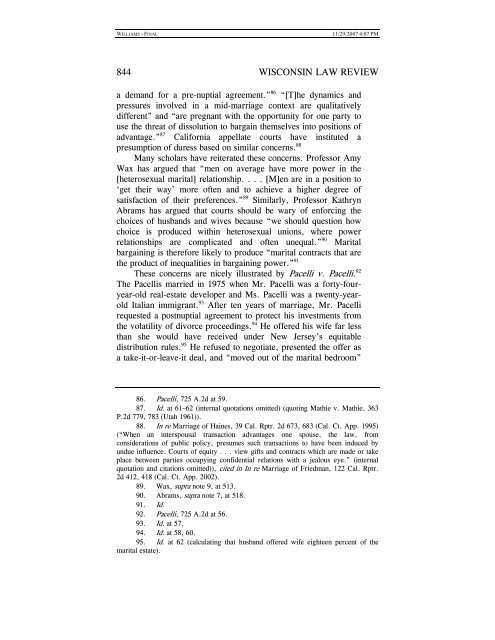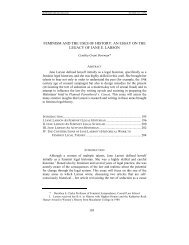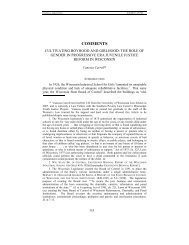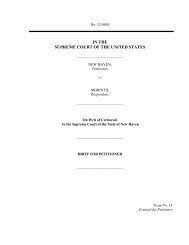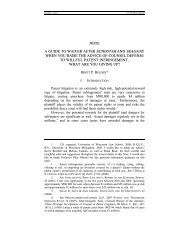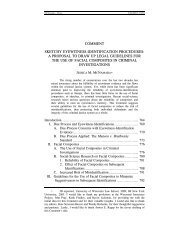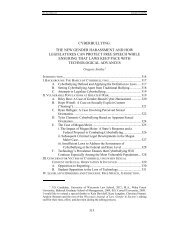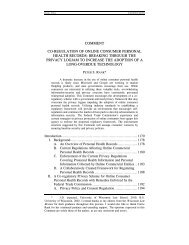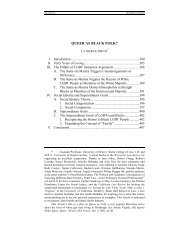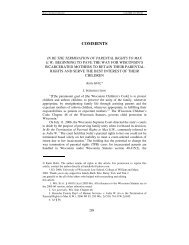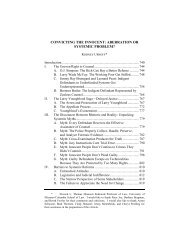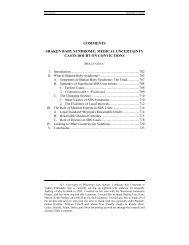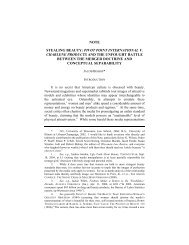POSTNUPTIAL AGREEMENTS - UW Law School
POSTNUPTIAL AGREEMENTS - UW Law School
POSTNUPTIAL AGREEMENTS - UW Law School
Create successful ePaper yourself
Turn your PDF publications into a flip-book with our unique Google optimized e-Paper software.
WILLIAMS - FINAL 11/29/2007 4:07 PM<br />
844 WISCONSIN LAW REVIEW<br />
a demand for a pre-nuptial agreement.” 86 “[T]he dynamics and<br />
pressures involved in a mid-marriage context are qualitatively<br />
different” and “are pregnant with the opportunity for one party to<br />
use the threat of dissolution to bargain themselves into positions of<br />
advantage.” 87 California appellate courts have instituted a<br />
presumption of duress based on similar concerns. 88<br />
Many scholars have reiterated these concerns. Professor Amy<br />
Wax has argued that “men on average have more power in the<br />
[heterosexual marital] relationship. . . . [M]en are in a position to<br />
‘get their way’ more often and to achieve a higher degree of<br />
satisfaction of their preferences.” 89 Similarly, Professor Kathryn<br />
Abrams has argued that courts should be wary of enforcing the<br />
choices of husbands and wives because “we should question how<br />
choice is produced within heterosexual unions, where power<br />
relationships are complicated and often unequal.” 90 Marital<br />
bargaining is therefore likely to produce “marital contracts that are<br />
the product of inequalities in bargaining power.” 91<br />
These concerns are nicely illustrated by Pacelli v. Pacelli. 92<br />
The Pacellis married in 1975 when Mr. Pacelli was a forty-four-<br />
year-old real-estate developer and Ms. Pacelli was a twenty-yearold<br />
Italian immigrant. 93 After ten years of marriage, Mr. Pacelli<br />
requested a postnuptial agreement to protect his investments from<br />
the volatility of divorce proceedings. 94 He offered his wife far less<br />
than she would have received under New Jersey’s equitable<br />
distribution rules. 95 He refused to negotiate, presented the offer as<br />
a take-it-or-leave-it deal, and “moved out of the marital bedroom”<br />
86. Pacelli, 725 A.2d at 59.<br />
87. Id. at 61–62 (internal quotations omitted) (quoting Mathie v. Mathie, 363<br />
P.2d 779, 783 (Utah 1961)).<br />
88. In re Marriage of Haines, 39 Cal. Rptr. 2d 673, 683 (Cal. Ct. App. 1995)<br />
(“When an interspousal transaction advantages one spouse, the law, from<br />
considerations of public policy, presumes such transactions to have been induced by<br />
undue influence. Courts of equity . . . view gifts and contracts which are made or take<br />
place between parties occupying confidential relations with a jealous eye.” (internal<br />
quotation and citations omitted)), cited in In re Marriage of Friedman, 122 Cal. Rptr.<br />
2d 412, 418 (Cal. Ct. App. 2002).<br />
89. Wax, supra note 9, at 513.<br />
90. Abrams, supra note 7, at 518.<br />
91. Id.<br />
92. Pacelli, 725 A.2d at 56.<br />
93. Id. at 57.<br />
94. Id. at 58, 60.<br />
95. Id. at 62 (calculating that husband offered wife eighteen percent of the<br />
marital estate).


